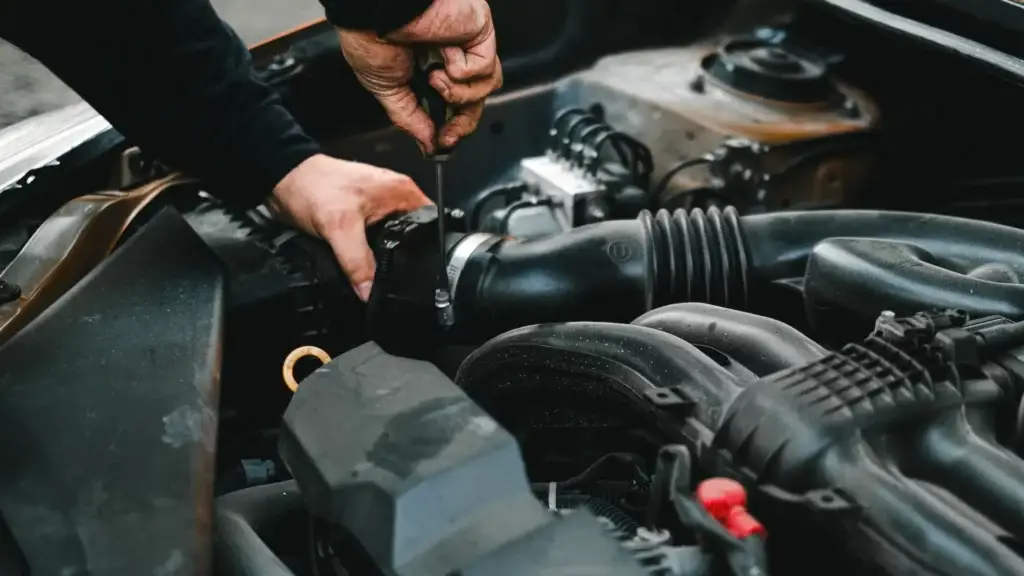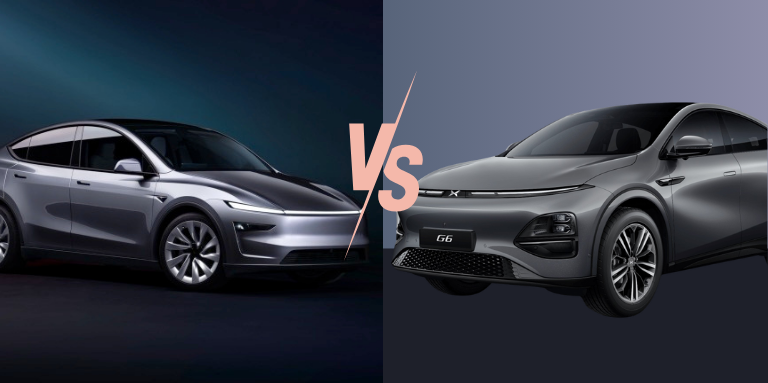This article is for information only.
Beev does not offer retrofit
What is a retrofit?
Retrofitting allows you to convert your old petrol or diesel vehicle into an electric vehicle and much more besides.
It must be carried out by accredited professionals who have obtained approval for their processing according to strict regulatory specifications.
The aim will be to dismantle the original mechanics of the car in question and replace them with an electric motor. electric motor and batteries. The aim is to "save" an old vehicle by giving it a new engine, or to continue to drive your favorite vehicle without emitting emissions.
This transformation also allows you to benefit from all the advantages advantages of the electric vehicle such as limited running costs, free free parking in some cities, no traffic restrictions or reduced maintenance.
Regulatory framework: Which vehicles are eligible for retrofit?
Here are the different categories of vehicles eligible for conversion to electric. If you own one of these models, the retrofit is just waiting for you!
- All vehicles in category L : i.e. motorcycles and mopeds, as well as all-terrain vehicles and other small motorized vehicles with three or four wheels.
- All category M vehicles: i.e. those with at least four wheels and designed to carry passengers.
- All category N vehicles: i.e. motor vehicles designed to transport goods, such as trucks or vans.
- Only vehicles over 5 years old (3 years for category L): more recent models can be converted if the conversion device manufacturer has received the manufacturer's agreement. However, vintage vehicles and agricultural machinery are excluded from the scheme.
What are the requirements for retrofitting?
Conversion to electric vehicle of your car to an electric vehicle can only be carried out if certain conditions defined by the decree are met:
- Battery: electrical retrofitting is possible with motor power supplied by a battery or a hydrogen fuel cell.
- Vehicle conformity : the device must guarantee the vehicle's original conformity. The dimensions of the basic vehicle must not be altered by the conversion.
- Motor: the power of the new electric motor must not exceed the original power of the converted combustion engine vehicle.
- Vehicle weight : the car must not vary by more than 20% after conversion.
- Conversion : can only be carried out by a professional established in France and authorized by a retrofit kit manufacturer.
- Date of purchase : the vehicle must have been purchased at least one year ago.
- Resale: You are not allowed to sell your vehicle within one year, nor before it has exceeded 6,000 km.
Each converted vehicle receives "prototype approval", and a conversion plate is affixed to the converted vehicle, alongside the manufacturer's plate.
It includes the name of the kit manufacturer, the VIN number of the vehicle, the prototype approval number, and the reason "conversion of engine to electric ".
Good to know: if you're thinking of retrofitting, don't forget to change your vehicle registration document. Yes, when a combustion-powered vehicle is converted, certain characteristics are modified, such as the P3 field on the vehicle registration document, which relates to the vehicle's fuel type.
How much does retrofitting cost?
Today, several players in the Retrofit players are already positioned in this nascent market, which will grow from strength to strength as the years go by.
Prices vary according to the type of vehicle and, above all, the size of the batteries. batteries which will determine the vehicle's finalrange. Electric retrofitting is an alternative to buying an electric car, which is still far too expensive for the French.
The price range is 8 000 € for a small city car to over 50 000 € for a longer-range model. The average range for a retrofit, however, is between 15,000 to €20,000. For trucks, it depends on the complexity of the retrofit and the customer's requirements. Costs are set to fall in the future, thanks to growing sales, economies of scale and purchasing volumes for batteries and parts. And even more so if the State, regions or even cities participate in the conversion bonus, which seems totally appropriate.
According to the founder of Transition-One (an electrical retrofit start-up that has closed its doors for good), the price could drop to 5 000 € for cars like the Renault TwingoVolkswagen Polo and Fiat 500.
Benefits of retrofitting
While on paper it may look a little like backroom tinkering, retrofitting does have its advantages:
- Price: the first advantage is undoubtedly the price. We're still in the early stages of this practice, so it's difficult to draw up price lists for different installers, but in the case of a city car, the companies currently working on it are talking about a conversion cost of around €8,000. That's a substantial sum, and no doubt underestimated, but still less than the purchase of a new "zero-emission" car.zero-emission". To date, the Dacia Spring has sold for around €17,090.
- No loss of identity: the law requires that the conversion to electric power, which entails extensive work on the chassis, does not change the car's behavior. Weight and weight distribution, for example, must not vary by more than 20%. Similarly, "the power of the electric powertrain must be within the closed range 65% - 100% of the maximum power of the original endothermic motor". Once modified, the car shouldn't vary much.
- Environmental movement: electric vehicles undeniably improve air quality, and retrofitting concerns older vehicles. These are often quite polluting models which, tomorrow perhaps, will no longer be allowed to be present in city centers where low-emission zones are multiplying at high speed, even though they are still perfectly roadworthy. Offering a electric" second life is a good idea in the fight against global warming.
Disadvantages of retrofitting
With a much lower conversion cost than buying a new car electric carretrofitting may be of interest to some motorists. Nevertheless, retrofitting does have a few drawbacks:
- Range: this will inevitably be well below that offered by"real" electric cars. While price may be an advantage, you'll have to make do with a range of a fewhundred kilometers, depending on the vehicle. This is nevertheless sufficient for commuting or city driving, but not really for vacations.
- Reliability: the second disadvantage is reliability in manufacturing, which will not receive the same attention or resources as at major manufacturers such as Renault, Tesla or even Nissan.
- Price: If price is an advantage, it's also one of the disadvantages, and one worth considering. In absolute terms, it's much less than buying an electric car car, but bear in mind that it could well exceed the €8,000 advertised for the smallest conversions. The first Renault Zoe are now selling for around €7,500 or €8,000 in the Renault. Even if you have to add the controversial battery lease, for this price you get a vehicle with around 60,000 km on the clock, which is technically mature and reliable, and offers at least twice the range of a retrofitted vehicle.
What assistance is available for retrofitting?
Retrofitting is authorized in over 30 countries : USA, Canada, Australia, and including 13 in Europe, in the UK, Germany, Italy, Belgium and now in France with Grenoble as the main flagship.
Grenoble has become the first metropolis in France to support the retrofit industry with financial aid for individuals and professionals.
This is an ecological and anti-waste approach, enabling you to extend the life of a more or less old vehicle, with a conversion to "zero emissions".
For whom?
- For private individualsGrenoble-Alpes Métropole's assistance will be indexed to the income of the taxpayer's household, and may reach €7,200 (distinguishing between vehicles weighing less or more than 2.5 tonnes).
- Business customers will be eligible for a subsidy of €4,000 for a commercial vehicle weighing less than 2.5 tonnes, and €6,000 above that (up to a maximum of 7 tonnes). Companies with fewer than 250 employees (including associations and the self-employed) are eligible, up to a limit of 5 vehicles per company.
The Île-de-France region is offering individual assistance of €2,500 to help residents of the region convert their combustion-powered vehicles over 5 years old into electric vehicles. The aim is to improve air quality and develop an industrial sector around this innovation.
Which companies retrofit?
Faced with tougher anti-pollution standards and traffic restrictions, many cars are no longer welcome in cities. And the situation isn't about to get any better, with bans on access for diesels being prepared in a number of major major European cities. With the expansion of low-emission zones (LEZs), many motorists will have no choice but to change their car, and therefore invest. Until now, modifying a vehicle in France has been very complicated, if not impossible, without the manufacturer's agreement.
Today, thanks to a handful of entrepreneurs grouped together in the association AIRe (Acteurs de l'Industrie du Rétrofit électrique) who embarked on the retrofit adventure in France and negotiated for almost a year with the government to change the regulations. Retrofit is now legal in France, joining the United States, Italy and Germany. The retrofit market already counts some twenty players worldwide, including the following companies.
A few companies:
- Transition One : Is a company founded by Aymeric Libeau in 2018. Transition-One is a founding member of the AIRe association (Acteurs de l'Industrie du Retrofit Electrique).
- Ian Motion: aims to make a significant contribution to the energy transition by electrifying existing vehicles and giving them a real, completely electric second life.
- Retrofuture: created by Marc Tison and Arnaud Pigounides, Retrofuture is also active in the retrofit market .
- Phoenix Mobility: is a young Grenoble-based company that launched in 2018 to convert thermal cars into electric cars.
- Canadian Electric Vehicles Ltd: was established in 1991 to convert internal combustion engine vehicles to electric power, including heavy-duty diesel truck conversions for the airline industry .
- Clean Ride electric vehicles: located in Minnesota , VECR restores and electrifies classic VW Beetles from top to bottom.
A promising market
According to theAIReretrofit in France over the period 2020-2025 would generate sales of more than than €1 billion for 65,000 converted vehicles, with 5,500 direct and indirect jobs. By converting 1% of the total French vehicle fleet, this would represent almost 400,000 vehicles and a business volume of over €5 billion, enough to whet the appetite. All that remains is to convince motorists.
Although replacing a combustion engine with an electric motor electric motor and batteries is now authorized by law, and despite the real advantages that this conversion can have in certain cases, it's still too early to consider it serenely. Better to wait and see how this small sector develops over the coming years.
































